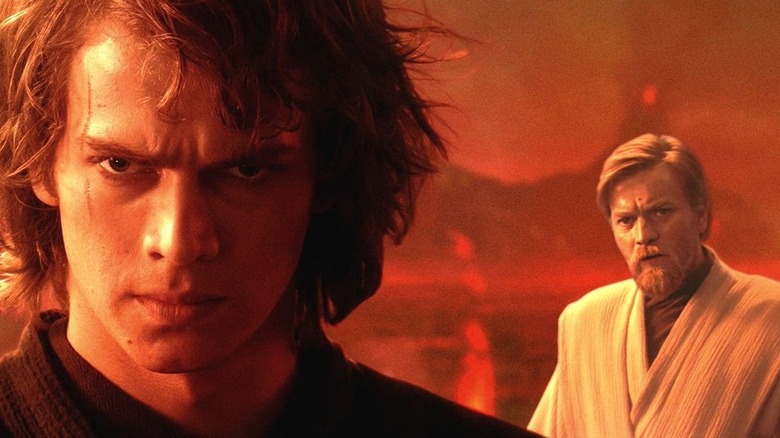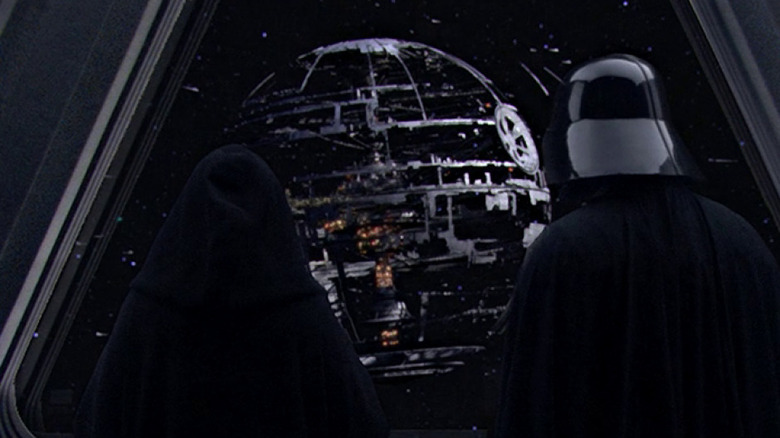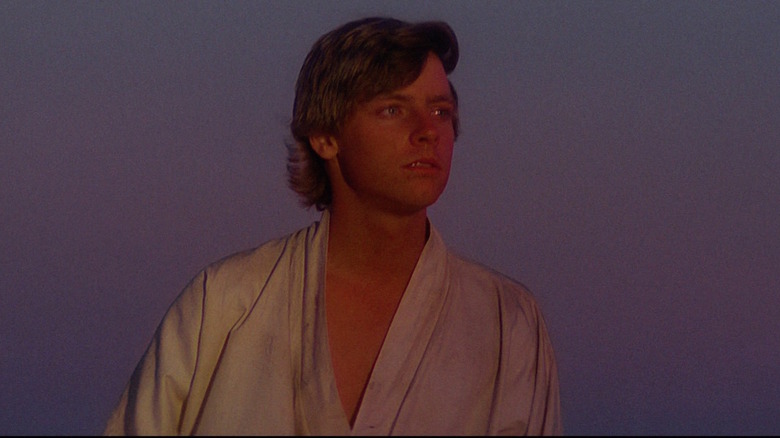The Ending Of Star Wars: Revenge Of The Sith Explained
Before Disney dipped into their limitless bank account and acquired rights to the franchise, "Star Wars Episode III: Revenge of the Sith" was originally meant to be the true ending to western cinema's most popular sci-fi saga. Finally fleshing out the backstory of Anakin Skywalker, the film takes audiences through the final weeks and days leading up to the once-great Jedi's fall from grace, and his adoption of the Darth Vader persona we know from the original trilogy.
On top of that, the film sets up many of the smaller things that viewers saw years before in the original trilogy. Name a crucial plot element that was present in "Episode IV," and it's likely that George Lucas inserted a plot thread connecting it to "Revenge of the Sith." With all of this in mind, let's take a look at how "Revenge of the Sith's" tragic ending affects the "Star Wars" franchise as a whole.
Episode III reveals the reasons behind Anakin's transformation to Darth Vader
In the end, Anakin's fall to the Dark Side is the result of one man's machinations. Senator Palpatine, a.k.a. The Emperor of the original trilogy, is revealed to be the Sith Lord Darth Sidious, and he has been playing the long-con to undermine both the Jedi and the Republic for decades. Knowing that Anakin is the chosen one, Palpatine takes great advantage of the young Jedi's uncertainties and attachments, making him the linchpin of his dark revolution.
In a behind-the-scenes interview for "Episode III," George Lucas drew on the old adage, "nobody who is evil thinks of themselves as evil." However, Palpatine may be the only exception because he manipulates the good intentions of Anakin Skywalker to make the powerful Jedi commit evil deeds. Drawing on the Jedi's love for Padme, Palpatine convinces Anakin that the Dark Side of the Force is the only method to saving his wife after Anakin begins having premonitions of her death during childbirth.
He further twists Anakin's good intentions by capitalizing on the Jedi Order's failures to sufficiently address Anakin's issues. As a Jedi sworn to celibacy, he cannot discuss Padme's health with his masters. And despite Anakin's accomplishments as a war hero and a Jedi, he is continually distrusted and left out by his Jedi superiors. In the end, Palpatine makes himself the one figure Anakin can be completely honest with — allowing him to disintegrate Anakin's trust in the order.
It foreshadows the original trilogy in several ways
While "Revenge of the Sith" chronicles Anakin's fall to the Dark Side, "Star Wars" as a whole is about Anakin's redemption and fulfillment of the prophecy (at least, until Disney threw that idea out the window). However, that isn't the only plot thread that "Revenge of the Sith" leads into. For instance, shortly after Anakin finally dons the iconic Darth Vader suit, we see the construction of the original Death Star present in "A New Hope."
Likewise, a scene involving Yoda and Obi-Wan points toward the eventual inclusion of Force Ghosts that appear in "Episode V" and beyond. After the fall of the Jedi Order, Yoda and Obi-Wan escape with some allies who would come to found the Rebel Alliance. There, Yoda meditates and encounters the spirit of Qui-Gon Jinn, who teaches Yoda how to attain the Force Ghost form upon death. Yoda then relays this information to Obi-Wan.
Additionally, "Revenge of the Sith" shows us where each of the series' main characters end up between the events of "Episode III" and "A New Hope." After Padme gives birth to Luke and Leia, the twins are split. Leia goes with Senator Bail Organa, where she eventually matures into one of the Rebel's most valuable leaders. Likewise, Obi-Wan takes Luke to his relative on Tatooine and remains there in exile, awaiting the day Luke is ready to begin training. Finally, Yoda himself departs for exile on Dagobah.
It also foreshadows the original trilogy thematically
More important than showing us the different plot elements that will become important in the original trilogy, "Revenge of the Sith's" ending relays a core theme of the movies that take place after it: there is always hope for the side of good. In showing each of the series' remaining heroes go their separate ways, "Revenge of the Sith" reminds us that there is goodness out there even in the direst times. And, as the original trilogy illustrates, that goodness merely needs to wait for the day where it can rise once again.
Much like how Palpatine bided his time until goodness was at its most vulnerable, the remaining Jedi waited for the day when Luke could take up their mantle and restore peace. And, since "Star Wars" is actually a redemption story about Anakin, it even shows the lingering goodness waiting to rise up in Vader. When he first wears the suit, his first concern is not furthering the Emperor's tyranny or gaining more power; rather, it is Padme's well-being. In the end, even Darth Vader's priorities betray his true nature. He is not evil. He is a good man who did evil things out of concern for those closest to him — a sentiment that also leads him to betray the Emperor in "Return of the Jedi."



